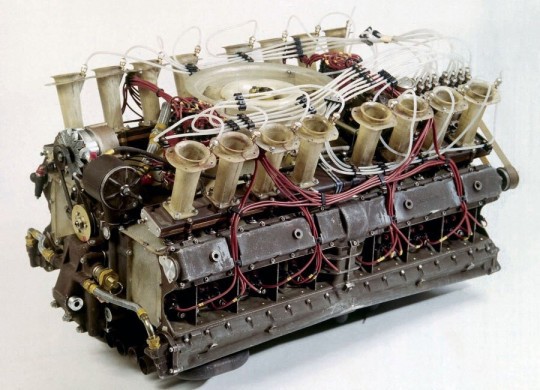16 Cylinder Engine
Porsche is living proof that the flat-six is immortal, but it also developed eight- and twelve-cylinder versions of the same design. These engines achieved fame in the 908 and 917 race cars, and the flat-12 also inspired Ferrari to drop V12s in favor of boxer engines. But Porsche also created a flat-16, a monster of an engine that has remained relatively unknown despite being tested successfully in the iconic 917.
16-cylinder engines are rare, but they're not unusual. Automakers started using V16 mills in the 1930s when carmakers like Cadillac and Marmon dropped them in luxury cars. Peerless also built a prototype in 1932. Both BMW and Mercedes-Benz experimented with V16 layouts in the 1980s, while Cadillac and Rolls-Royce rolled out V16 concept cars in the 2000s. Every Bugatti since the Veyron has been fitted with a W16.

As far as race cars go, Maserati, Auto Union, and Alfa Romeo developed their own V16s in the 1930s and the German outfit actually dominated the Grand Prix scene with them. But the flat-16 layout is a unicorn. Coventry Climax built a prototype in the 1960s, but it was quickly dropped due to reliability problems.
Then Porsche came up with its own version of the flat-16, which was only an inch away from becoming a production unit for the 917 race car.
Porsche's flat-16 engine is linked to the company's efforts in the American Can-Am racing series. Unlike other championships, the Can-Am had very open rules. The relaxed regulations spawned very powerful cars fitted with American V8 engines rated at more than 600 horsepower in the 1960s and in excess of 800 in the early 1970s.

Porsche joined the series in 1970 with the 908 and the 917K Le Mans car, but both proved underpowered against racers from McLaren, Lola, and Chaparral. In pursuit of more oomph, Porsche decided to add more cylinders to its successful flat-12. The result was a 7.2-liter flat-16 that developed a whopping 880 horsepower at 8,000 rpm. It's important to remember that this was a naturally aspirated mill.
The massive flat-16 was dropped in a modified 917. It featured a cleaner exterior compared to the Le Mans car and a modified chassis and rear hood to fit the larger engine. The Germans built four of them with a clear intent to take it to Can-Am and ran extensive testing with Mark Donohue behind the wheel.
Donohue described the 917 flat-16 as a monster and said of the engine itself that it would have been capable of up to 2,000 horsepower with turbocharging. But the flat-16 never made it on the race track. So what went wrong?

Nothing really. The flat-16 was powerful enough for the series and highly reliable, but Porsche decided to go the turbo way with the smaller flat-12. It continued to race the naturally aspirated flat-12 in 1971 but introduced a turbocharged, 5.0-liter version of the same mill in 1972.
Rated at a massive 900-horsepower, it was used in the 917/10K and won the Can-Am championship, putting an end to McLaren's domination after five years.
While the 917/10 wasn't notably more powerful than the 917 fitted with the naturally aspirated flat-16, Porsche returned to Can-Am with the 917/30 in 1973. Fitted with a twin-turbo, 5.4-liter flat-12 rated at up to 1,580 horsepower, the 917/30 helped Porsche take the championship home effortlessly. In 2021, the 917/30 is still the most powerful race car ever built.

So unlike other experimental engines of the same variety, Porsche's flat-16 didn't fail. The Germans simply considered that a turbo layout was better, so they opted to retire the flat-16 before it hit the track in an official event. Two of the four flat-16 engines have survived to this day, and one of them is still fitted in the white-painted, unmarked 917 that served as a test-bed in 1971.
This unsung hero rests in the Porsche museum, but it's being showcased at public events from time to time. If you're lucky enough, you might just see it in the metal one day. If you're looking to reach automotive Valhalla, pray to the gods that Porsche fires up that flat-16 monster on a race track some day.
Source: https://www.autoevolution.com/news/i-bet-you-didn-t-know-porsche-built-a-16-cylinder-engine-156151.html


0 Komentar